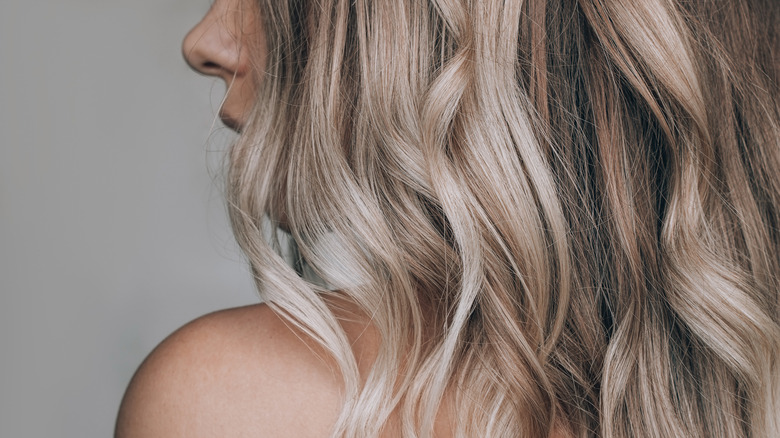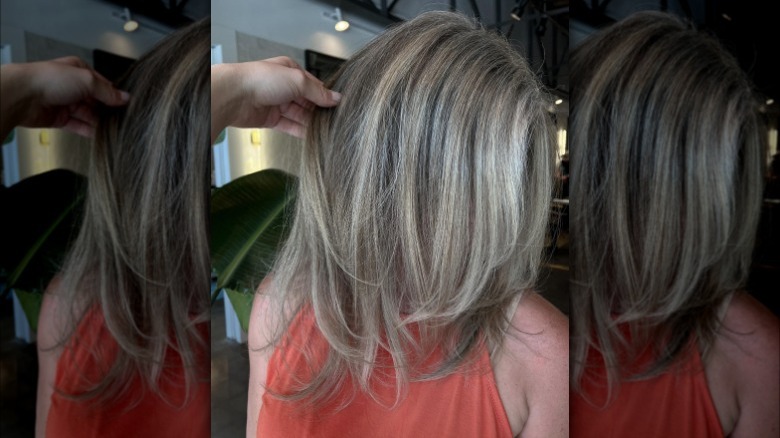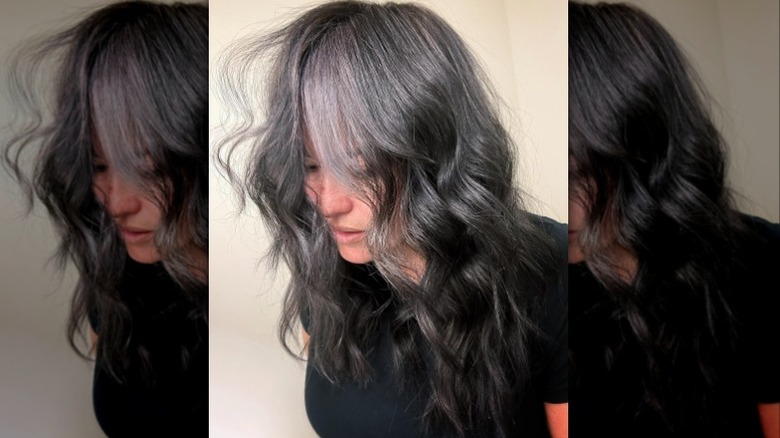'Gray Blending' Puts A New Twist On Traditional Salt And Pepper Hair
You can try to run, you can try to hide, and you can try to dye, but gray hair will probably catch up to you eventually. And there's nothing wrong with that. Contrary to popular belief, graying hair doesn't even have to be something that's associated with old age. Gray hair strands could start appearing as early as your 20s or 30s, but as you grow older, they'll most likely start to become more noticeable as they take over your old natural hair color.
Speaking to Cosmopolitan, trichologist Madeleine Preston explained why our hair turns gray. "Hair turns white when the pigmentation cells responsible for color (melanin) stop being produced," she said. "Nutritional and hormonal factors can affect hair color as well as stress but, by and large, the predisposition to go gray earlier or later in life is genetic." So, sooner or later, you can expect to start seeing gray hair when you look in the mirror.
Despite gray hair being such a natural part of life, we've been taught that the second it starts appearing, we need to bust open a box of dye and hide it as soon as possible. But thankfully, there's been another shift in the ever-changing beauty standards, and this time, it's getting people to embrace their gray hair. It's called gray blending, and it's an incredibly stylish and versatile method to rock your gray hair in an empowering way.
Gray blending is the perfect way to style your gray hair
Gray blending is a hair coloring technique in which your hair stylist will create a beautiful gradient of sorts. It'll bring depth to your hair by dyeing your tresses with darker and lighter colors closest to your existing hair color to create a striking contrast. This will create a seemingly natural look that doesn't mask your grays but helps them pop by giving them a canvas to shine against. Traditionally, gray blending looks similar to a balayage or highlights due to the interplay of colors.
With gray hair blending, the customization options are endless. You can decide how prominent you want the gray to be. If you want to keep things subtle, you can go for baby lights that accentuate the gray while keeping your darker hair front and center. For more comprehensive coverage that looks natural, get balayage-esque blending done.
If you have super dark hair, you can use your natural silver-toned hair to create a darker contrast that almost glows against the base. And you can even give your silvery strands a metallic, copper tint to create a unique look. Your best bet would be to work with your stylist to find a style that fits you like a glove.
Consider the pros and cons of gray blending
Gray blending can save you money in the long run by reducing the need for touch-ups since your newly gray hair will just blend right in. While it's easy to say that everyone should embrace their gray hair, it can be hard to follow through with it because of societal messaging that has convinced us it's the end of the world. But having gray blended hair can make the transition easier by giving you a refreshingly modern look. It's also a great option for people who want to dye their hair but aren't ready to face the damage that complete dyeing of the hair causes.
And while gray blending is incredibly effective, there are a couple of downsides to it. Gray blending usually isn't a one-and-done process. You might not be able to achieve the exact gradient you're looking for in one session. And the added sessions can get quite pricey.
You will also most likely have to give your hair strands enough time to grow and blend in with the colored hues. In fact, your stylist might recommend waiting a few months to let your gray roots properly grow so that they can judge the true color of your hair. This period can be quite awkward for some because the roots will grow gray while the rest of your hair will appear differently. So, prepare yourself for a fruitful marathon, not a sprint.


